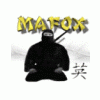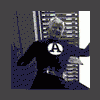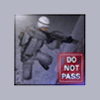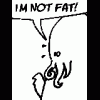
Sztuki walki z Wietnamu
Napisano Ponad rok temu
Tekst napisal gosc o nicku: DaiCoViet
Milej lektury.
--- CUT --- CUT --- CUT ---
Historians of Vietnamese Martial Arts usually trace the roots to Vietnam's origin (first settlement on this territory arised at 2876 B.C.). A more realistic date seems to be about the X-XI centuries A.D. At this time a state was founded in the area of today's northern Vietnam. Its name changed - Nam Viet, Dai Co Viet, or simply Dai Viet ("Great Viet").
Great Viet State grew and got stronger during continuous wars against mountain tribes, Khmers, Chams (their state, in the South of today's Vietnam, was finally conquerred at 1471), and China. There were a lot of wars between China and Vietnam. Sometimes the Vietnamese won, sometimes the Chinese conquerred Vietnam.
The threat of neighbouring Middle Empire constantly forced Vietnam to prepare its troops and, as a result of the problematic but always intimate relationship, numerous details of Chinese state structure, Chinese philosophy, and Chinese culture were adopted. For instance, Vietnam borrowed the Chinese system of state exams. Officials had to be able to use brush as well as sword. The curriculum of military education included, in particular, hand-to-hand combat.
Since the XI century there was an academy (or university) of martial arts in the capital, Thang Long city (today's Hanoi). This academy prepared master-teachers, who had a diploma of "doctor of military science". Every candidate had to pass 11 exams, then he studied for 3-5 years until passing the graduate exam. This time also is known for its variety of competitions, and for the creation of numerous treatises on martial arts. The most widely known treatise is "Linh Nam Vo Kinh" ("On Vietnamese Martial Art") written in the XVI century.
Of course, martial arts were taught in family schools and in buddhist temples as well. We don't know too much about people's styles of that time, but the tradition of martial dances is still alive. At that time all martial arts were known as Vo Thuat (art of hand-to-hand combat) or Viet Vo Dao (martial way of viets).
Many martial arts were created during XVI-XVIII centuries, when Vietnam was separated in several states. It was a good situation for the developing of martial arts. Many martial arts surfaced during the Tay Son Rebellion (1771-1788), the first serious attempt for unifying the country. The rebel's base was in Binh Dinh Province which still is a place with many martial arts.
The country was finally united at the beginning of XIX century. But during the period of 1858-1884 Vietnam was conquerred by France and became its colony. During the colonisation martial arts had to be kept underground and were transferred in family schools only, from father to son. Studying was kept secret, students sweared to never use their martial art without serious reason and to not divulge its secrets.
The revival of the tradition in Vietnamese martial arts is connected with Nguyen Loc (1912-1960). He was born in Son Tay (Ha Tay Province, near Hanoi). In 1938, he founded the first club of Vo Thuat for all interested people (including foreigners!). He named his school Vovinam Viet Vo Dao (often referred to as "the best from Vietnamese martial arts").
In 1945, a first public demonstration of Vovinam Viet Vo Dao took place in Hanoi and subsequently Viet Vo Dao clubs arised in all regions of nothern and central Vietnam. After the death of Nguyen Loc, his successor - Le Sang - organized a big meeting of masters in Saigon for fostering the plan of spreading vietnamese martial arts worldwide. In 1972, the European Viet Vo Dao Federation was established and in 1980 the corresponding World Federation followed (president: Phan Hoang).
Now 90% clubs of World Viet Vo Dao Federation practice Vovinam. Others are Thanh Long (strong dragon), Han Bai (white crane), Tran Minh Long and Nguyen Trung Hoa (family schools).
In Vietnam the most popular schools are Vovinam, Kim Ke and Vo Binh Dinh. Also there exist about 30 schools, which are not so well known. In addition, there exist numerous so-called Sino-vietnamese styles.
Nguyen Loc created his school on the base of local schools of Shontei Province and other Vietnamese styles which he studied during extensive travelling as well as on the base of the "Linh Nam Vo Kinh" treatise. Vovinam is famous for its various kicks - sweeps, blocks, "scissors" on different levels, jumping kicks, attacks with final jumping on the opponent.
Kim Ke means "golden cock". Kim Ke fighters prefer to attack from the side. Special features are strikes, similar to strikes by the cock's taloons, two-legs jumping kick to the head or torso. Teeth also are used very often. This style is very quick, 'the best defence is offence' is a well-known saying from this style.
Vo Binh Dinh is a style that originated in Binh Dinh (today Ngia Binh) Province. It is based on the assumption that the opponent is non-vietnamese and therefore likely taller and heavier. Hence a Vo Binh Dinh fighter constantly moves, changes positions, changes the directions of movement, uses counter-strikes to attacking arm or leg.
Besides pure Vietnamese styles, there are also numerous Sino-vietnamese styles (e.g. Thieu Lam, Bach My Phai). Those schools were popular among Chinese, who lived in Vietnam. Also more recently, after the creation of People's Republic of China, some masters emigrated to Vietnam including the following styles: Mei Hoa (Meihuaquan), Vin Tsun (Yongchunquan, also known as Wing Chun), etc.
Napisano Ponad rok temu
Styl o nazwie Tha^'t So+n Tha^`n Vo~ Dda.o
Z reklamy stylu:
Than Vo Dao - The Seven Mountains Way of Spiritual Martial Art - has been well known in Vietnam for centuries. It is renowned for internal energy training, for healing and for graceful Kung Fu forms and powerful fighting skills.
This ancient art was shaped in China by the Esoteric Taoists. It spread through Burma, where it was influenced by the Mystic Buddhist School of Spiritual Martial Art, and through Thailand, Laos, Cambodia, and over the Seven Mountains into Vietnam.
Than Vo Dao combines external and internal disciplines to achieve martial skill. Its flowing cursive motion can appear soft and gentle, but can manifest with explosive power. The art develops kicks and strikes of blinding speed, with the sinuous, winding energy that is Than Vo Dao's trademark.

Napisano Ponad rok temu
na naszych stronach są tez linki do stron o Vo
pozdro
Napisano Ponad rok temu
+Higher level also have Defence against "Sung truong gan luoi le"(please help translate) -> I don't really know the term in English but it more invole with close army combat with gun (say M16 with "knife" in front)
To fragment wypowiedzi na prosbe o charakterystyke stylu Vovinam.
Rozumiem, ze chodzi tu o techniki obrony przed atakiem bagnetem.
Prosba do pana Jozwiaka: czy mozna prosic o krotka charakterystyke tego dzialu technik Vovinam VVD? Tzn. od jakiego poziomu sie ich uczy, czy Pan sie ich uczyl, jak duzy jest to dzial technik, jak wygladaja same techniki oraz czy uczy sie tylko podstawowej samoobrony brzed takimi atakami czy tez walki na bagnety?
Napisano Ponad rok temu










[link widoczny dla zalogowanych Użytkowników]
[link widoczny dla zalogowanych Użytkowników]
Napisano Ponad rok temu
Prosba do pana Jozwiaka: czy mozna prosic o krotka charakterystyke tego dzialu technik Vovinam VVD? Tzn. od jakiego poziomu sie ich uczy, czy Pan sie ich uczyl, jak duzy jest to dzial technik, jak wygladaja same techniki oraz czy uczy sie tylko podstawowej samoobrony brzed takimi atakami czy tez walki na bagnety?
VVD było na poczatku klasycznym combatem, za czasem stało się Sztuka walki z filozofią itd. Techniki o ktore pytasz to nic innego, zadne cuda - podstawowe techniki z metodyką przeznaczoną na cele słuzb mundurowych. Np zastosowanie Don Chan, nożyc tylko na niskim poziomie w celu obezwładnienia przeciwnika. Dużoi technik nożem, bagnetem, długim i średnim kijem, szermierka na karabiny ( z bagnetem oczywiście ), działanie w patrolu, kajdankowanie itd.
Uczyłem się od ludzi z VVD, którzy kiedyś byli w armii wietnamskiej po obu stronach. Zreszta w Polsce mamy kontakt z komandosami z Vietcongu i niedługo bęfdziemy mieli z nimi wspolny trenin. Sa to autentyczni fighterzy a nie nawiedzeni gówniarze
Napisano Ponad rok temu
Napisano Ponad rok temu
mam pytanie- co robia ci dwaj panowie z jedna rekawica na piesci? 8O
Napisz do ich nauczyciela, moze Ci zdradzi tajemnice stylu.
Na pierwszy rzut oka wyglada, ze kopia sie w lapki, ale czasem im nie wychodzi i wtedy trafiaja partnera w pysk ... :wink:
Qwan Khi Do to bardziej Vo Co Truyen niż VVD
--------
To teraz pare fotek wygladajacych jak z Vo Vi Nam.






Napisano Ponad rok temu
Napisano Ponad rok temu
Napisano Ponad rok temu
pij mniej kawy :wink:
Z kawa dobrze trafiles - to jedyny napoj dostepny u mnie w pracy, wiec pije go w NIEWIARYGODNYCH ilosciach.
I zeby byla pelna jasnosc - ton mojej wypowiedzi byl zartobliwy 8) (bo przez Internet nigdy nie ma pewnosci, czy ktos docenia poczucie humoru drugiej strony )
Pozdro
Napisano Ponad rok temu
Sam Vo Su Ryszard Jozwiak (przepraszam za naruszenie prywatnosci - dlugo sie zastanawialem czy ryzykowac :-) )



W Polsce nieodlacznym elementem treningow jest gra w koszykowke. (przy okazji - ja NIGDY nie umialem grac w zadna gre z pilka, poczynajac od pilki noznej po pingponga. Dlatego nienawidzilem tej koszowej zarazy)




Napisano Ponad rok temu
Tak to sie robilo kiedys w Wietnamie:
Samoobrona:
[link widoczny dla zalogowanych Użytkowników]
[link widoczny dla zalogowanych Użytkowników]
[link widoczny dla zalogowanych Użytkowników]
[link widoczny dla zalogowanych Użytkowników]
[link widoczny dla zalogowanych Użytkowników]
[link widoczny dla zalogowanych Użytkowników]
[link widoczny dla zalogowanych Użytkowników]
[link widoczny dla zalogowanych Użytkowników]
[link widoczny dla zalogowanych Użytkowników]
[link widoczny dla zalogowanych Użytkowników]
[link widoczny dla zalogowanych Użytkowników]
[link widoczny dla zalogowanych Użytkowników]
Ataki dwiema nogami jednoczesnie:
[link widoczny dla zalogowanych Użytkowników]
[link widoczny dla zalogowanych Użytkowników]
[link widoczny dla zalogowanych Użytkowników]
[link widoczny dla zalogowanych Użytkowników]
Wiecej zdjec na stronie [link widoczny dla zalogowanych Użytkowników]
Napisano Ponad rok temu
No to jeszcze muzyka Vovinam.
Piosenka:
Slowa piosenki:
[link widoczny dla zalogowanych Użytkowników]
Napisano Ponad rok temu
Napisano Ponad rok temu
Napisano Ponad rok temu
pij mniej kawy :wink: nie mam zamiaru krytykowac czy nasmiewac sie.. autentycznie jestem ciekawy dlaczego ci panowie maja po jednej rekawicy.. moze to taki dziwny system ze jedna reka chwytasz a druga stukasz :wink: nie wiem.. po prostu jestem ciekawy i tyle... PEACE
Miałem kiedyś takie ćwiczenie - nie gdzie indziej, jak na naszym wspaniałym koreańskim TKD
Polega w skrócie: ty masz jedną rękę do ataku + bloku i jedną nogę do ataku. Przeciwnik ma Cię trafić - nie odsłaniając się... (ma do dyspozycji to samo).
Albo 1 - ręka 2 - noga (dobre do walki sportowej)
Hmm - te wysokie kopnięcia - i to ma być combat - widać bardzo zatracił swój charakter... :roll:
Użytkownicy przeglądający ten temat: 1
0 użytkowników, 1 gości, 0 anonimowych
 FaceBook
FaceBook
10 następnych tematów
-
 Metodologia nauczania tradycyjnych japońskich SW
Metodologia nauczania tradycyjnych japońskich SW- Ponad rok temu
-
 Czy zdarzyło się wam coś takiego?
Czy zdarzyło się wam coś takiego?- Ponad rok temu
-
 clip
clip- Ponad rok temu
-
 Dlaczego zaczeliscie trenowac MA?
Dlaczego zaczeliscie trenowac MA?- Ponad rok temu
-
 komandosi sredniowiecza
komandosi sredniowiecza- Ponad rok temu
-
 shaolin kempo...?
shaolin kempo...?- Ponad rok temu
-
 Sztuka walki indywidualnie?
Sztuka walki indywidualnie?- Ponad rok temu
-
 Street fighting
Street fighting- Ponad rok temu
-
 WAKACJE 2003
WAKACJE 2003- Ponad rok temu
-
 Czy lepiej jest cwiczyc bjj czy karate kyokushin?
Czy lepiej jest cwiczyc bjj czy karate kyokushin?- Ponad rok temu








